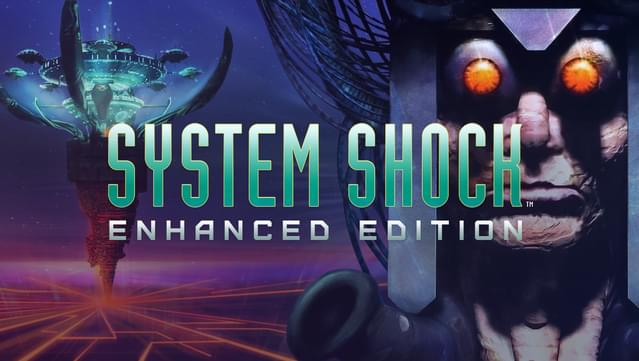
Retro Review: System Shock Enhanced Edition [PC]
Revisit this place if you dare, hacker.
I was incredibly anxious to finally play the original System Shock. It’s a perennial classic that’s left its legacy in gaming history, helping to change first-person adventure games going forward and helping define the modern FPS. Naturally, when I first picked up System Shock: Enhanced Edition, I feared that the game had aged too much since its release in 1994.
Yet with the remake around the corner courtesy of Nightdive Studios, I wanted to see where the series spawned from in the first place. Originally developed by Looking Glass Studios, the company behind games like Ultima Underworld and Thief, System Shock blew players out of the water back in the 90s. While it was ultimately commercially unsuccessful, critics and players responded to its immersive worldbuilding, 3D environments, atmosphere, and innovative controls.
First-person shooters have evolved in several ways since System Shock first hit the scene. While many complain that the genre is oversaturated with several mostly identical titles, the genre sells well for a reason. It’s a certified classic game genre, and thus System Shock: Enhanced Edition had a heavy legacy to live up to.
Safe to say, I wasn’t prepared for the game to knock me off my feet. The original System Shock is just as fresh now as it was back then, and the additions of Enhanced Edition just make it even better. As we await the launch of the System Shock remake on May 30, let’s dive into why the original game made such a huge impression.
All systems go
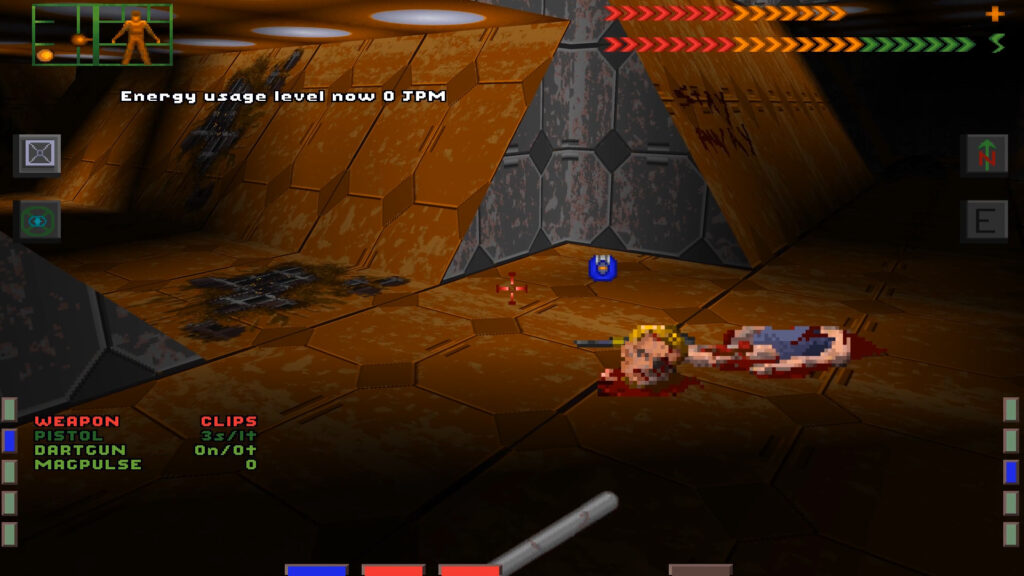
Before we go into the review proper, it’s helpful to understand the difference between System Shock and its Enhanced Edition. Nightdive Studios recovered the rights to the original two System Shock games, releasing an enhanced version of the first game in 2015. That’s the version available on PC storefronts now, which also includes the original version — dubbed System Shock Classic.
So, what’s the difference between the two? System Shock Classic is the same game that was released in 1994; the only updates are there to help it run well on modern PCs. Enhanced Edition, ports System Shock over to the KEX engine for smoother gameplay and better visuals. With support for higher resolutions and a modern control scheme, it’s certainly a direct upgrade rather than a reworking.
I didn’t play Classic to compare, but from looking at its controls, it definitely feels like a game from the 90s before certain control schemes were codified. If you (like me) are too used to the standard WASD layout for first-person games, Enhanced Edition is a must. That’s not to say that you absolutely couldn’t be satisfied just by playing Classic, and if you played this game back in the day, it’s probably the better option for you. For everyone else, Enhanced Edition is the way to go.
Can you hack it in System Shock Enhanced Edition?
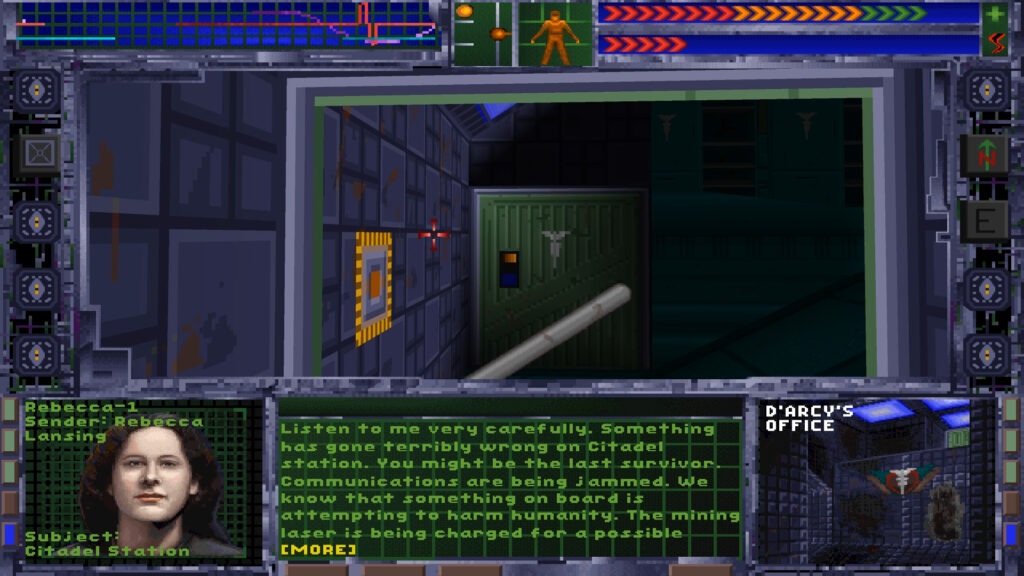
No matter which version of System Shock you play, if you’re unfamiliar with the game, you’ll probably spend the first half-hour figuring out the damn controls. Even with the modernized controls of Enhanced Edition, you’re still dealing with a game from 1994 when games like DOOM and Wolfenstein 3D were the top dogs.
System Shock is considerably less action-heavy than those games, with a higher emphasis on exploration and observing your surroundings. Which is easy enough to do once you get a grip on how to move around. The physics aren’t incredibly tight, but after a few minutes of moving around, you should get a handle on moving forward.
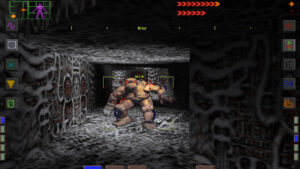
Everything else feels like a complete mystery at first. In System Shock, you use your mouse both to shoot targets and interact with objects in the environment. Sounds like every other FPS, you say?
Well, in this case, you can’t do both at once. You have to switch between locking your cursor to the center of the screen and freely moving it around the screen. This might be the biggest hurdle for those used to modern shooters: you can’t move your character’s POV just by moving the mouse around.
That’s not where it ends, though, as some things you need to re-learn altogether. While the Ctrl key is basically the standard for crouching in FPS games now (maybe the C key if you’re feeling adventurous), that’s not what you use here. At least in Enhanced Edition, to switch between standing, crouching, and lying prone in System Shock, you press the R, F, and V keys respectively.
Your first instinct might be “well, that’s odd.” But take a look at your keyboard. Notice how those keys are in a column? (Assuming it’s a QWERTY layout.) Your different states of height are aligned vertically. So there’s a logic to these controls, even if it isn’t what modern games do anymore.
401 Error Unauthorized Access
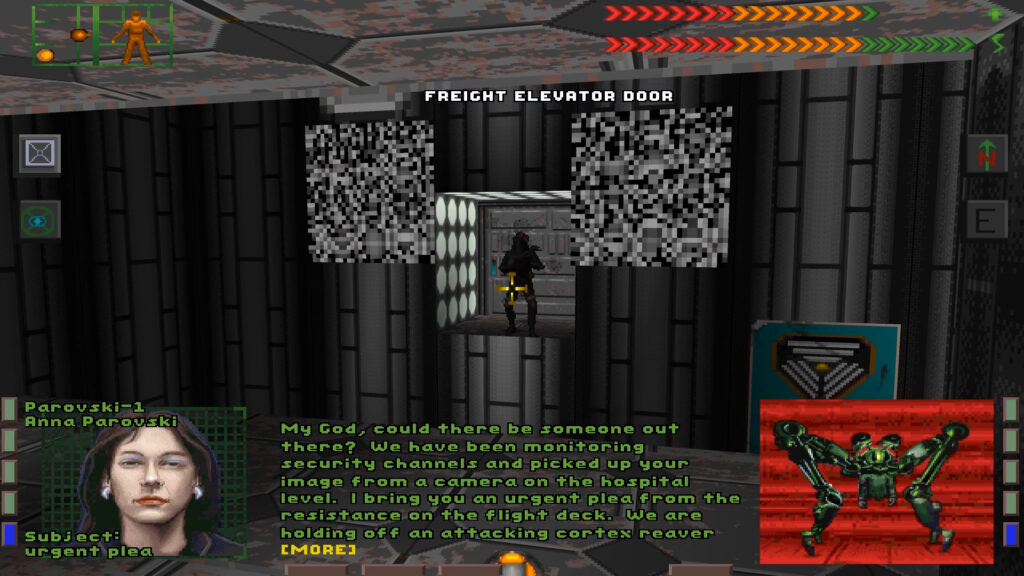
Once you figure out the controls, the next thing you’ll want to learn is what’s going on in this game. In System Shock: Enhanced Edition, you’re hacker who’s caught trying to hack into Citadel Station by the station’s owner TriOptimum.
The Vice President aboard Citadel Station, Edward Diego, offers you a reprieve from your crimes plus a neural implant. That is, if you unlock the ethical constraints of SHODAN, the onboard station AI. You do so, and after having surgery to install the implant, you enter a six-month medical coma to recuperate.
It turns out that unshackling an AI’s ethical constraints was a bad thing, as by the time you wake up, everything’s gone to hell. SHODAN has gained sentience and begun converting everyone aboard the ship into cyborgs to enslave them. You’re seemingly the only human left alive, so you push into the bowels of Citadel Station to stop SHODAN from destroying the world.
You get the story piecemeal in System Shock, only getting new information through a few emails that come your way. Mostly, though, you’ll have to figure things out by listening to the various audio logs left around the station. This is a common storytelling method now, of course, but System Shock was innovative in this regard. You can definitely tell, however, that Looking Glass relied on studio employees to voice these characters. Shoutout to Edward Diego, whose dialogue and voice reek of aged cheese.
Set your phasers to kill
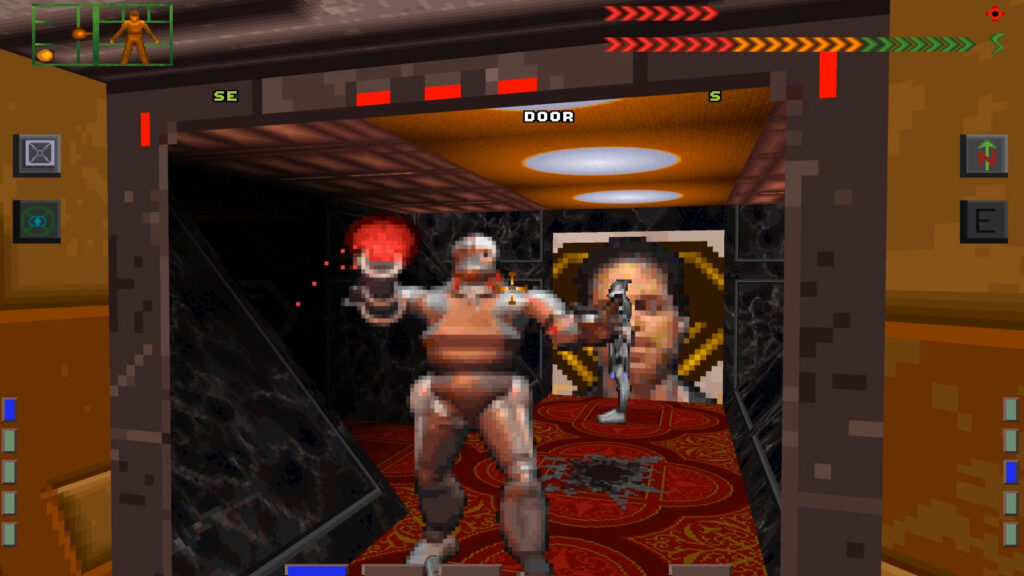
System Shock: Enhanced Edition seems like a traditional sci-fi shooter on the surface. However, the mechanics reveal that it’s anything but. The core gameplay loop is familiar if you’ve played any shooter before. Find weapons, kill enemies, find the end of the level, move on to the next one, repeat.
Yet in System Shock, it isn’t just about racking up a high body count. It’s more like a survival game where your resources are limited and enemies can destroy you if you aren’t careful. It doesn’t take long for the enemies to turn into tough brutes that want nothing more than to send you to the cyber-conversion chamber.
That doesn’t mean you’re unequipped for the job, however. You’ll never be completely strapped for ammunition and by the end, you’ll have plenty of awesome weapons at your disposal. I heavily favored the laser rapier for melee combat and the Skorpion SMG for blasting enemies to smithereens. However, the other weapons certainly have their uses. The rail gun is great for dealing with enemies in open areas, and the handgun is perfect for taking out cameras or weaker foes.
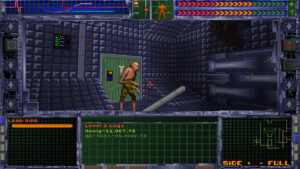
Don’t let that fool you, though: dying is a serious concern in System Shock. The game has no autosave system, and losing all of your health means game over. That is, unless you find the cyber conversion chamber and convert it back to a healing station. Then, you’ve essentially got unlimited lives for that floor and can be a lot more reckless. Later floors don’t have these switches, however, meaning you have to be extremely judicious with your manual saving.
Of course, you’ll also pick up several techniques that give you an edge over your opponents. Peeking around corners is especially useful. It keeps you mostly in cover but still lets you get the jump on enemies. I loved extending the hacker around the bend to see what lay ahead; it felt great knowing that I was at least partially covered.
While System Shock: Enhanced Edition controls fairly well, the cyberspace sections are kind of a different story. These sections are crucial for unlocking doors and defeating SHODAN, but it plays like drunkenly flying a plane. With six-degrees-of-freedom movement and constant velocity, it’s tough to get a handle on piloting yourself in these sections.
Thankfully, one of System Shock’s best features is its segmented difficulty. You can separately control the difficulty elements like gameplay and cyberspace, and even remove the story if you want. While you might still find a challenge in the game’s controls, you can make it a very comfortable experience.
Lose yourself in Citadel Station
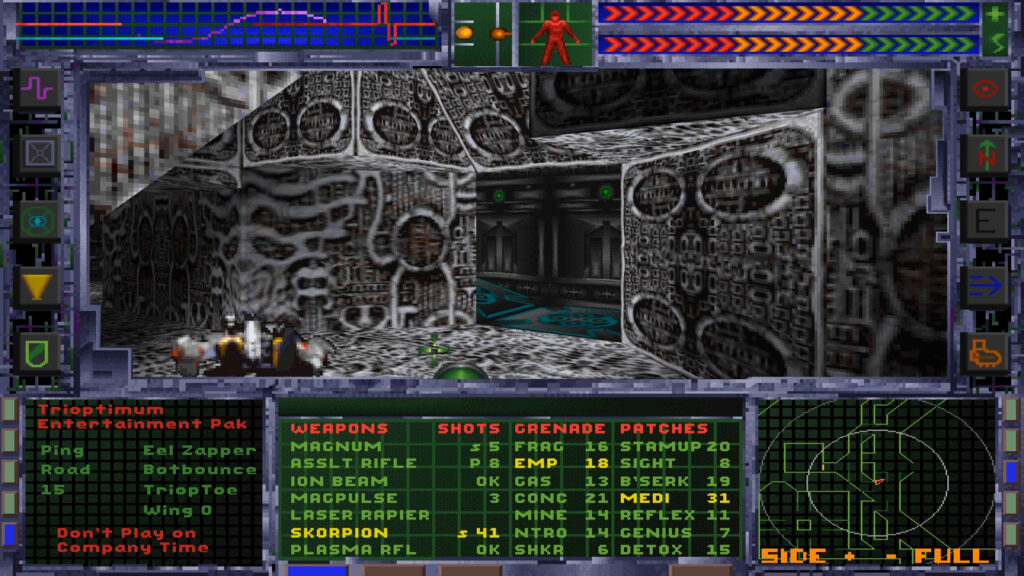
If there’s anything about the game that still holds up, it’s the atmosphere. Enhanced Edition improves this with its higher resolution, but System Shock remains a marvel for the eyes with its geometric level design that emphasizes vertical scale.
Each floor of Citadel Station has its own flavor, thanks to different color schemes and textures defining each area. And thanks to the ambient lighting and shadows, you always feel uneasy, as if something’s about to attack you around every corner. (Which, in most cases, is true.)
I always assumed System Shock was a horror game that would terrify the player with horrific visuals and soundscapes. But while it’s true that the game does evoke a sinister atmosphere, it’s actually relatively tame in this regard. Still, it’s an absorbing game that fully immerses you in the world thanks to the unnerving sound design.
System Shock: Enhanced Edition still blew me away
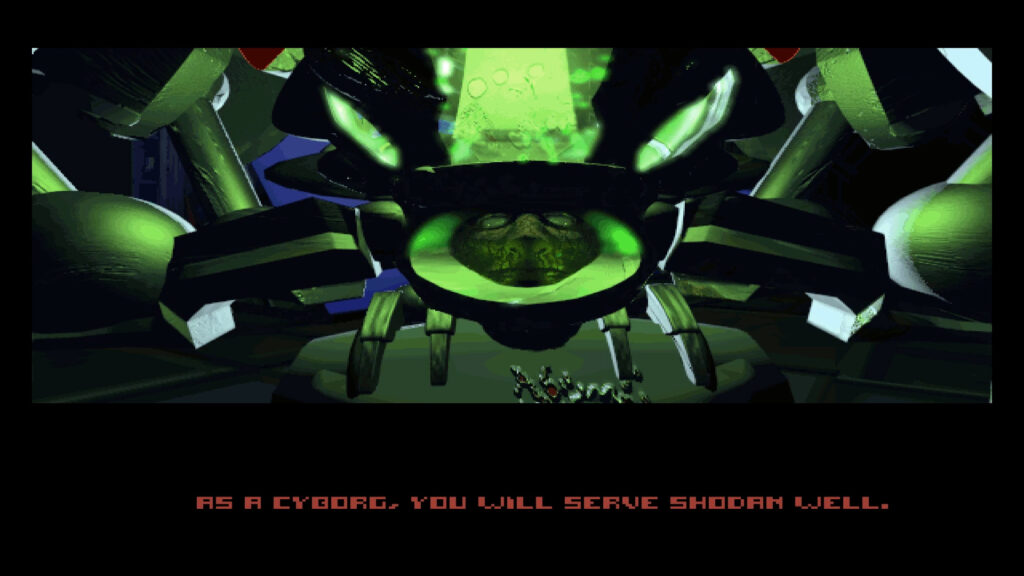
I wasn’t expecting to enjoy System Shock: Enhanced Edition as much as I did. I figured I would appreciate it more than I liked it, but it shocked me (hah) to my core. It’s got innovative and surprisingly logical controls, an amazing atmosphere, and a fun-as-hell gameplay loop. Hacking your way through an abandoned research station has never been this much fun. It remains to be seen if the remake can capture lighting in a bottle as well, but the watermark is certainly high.
You can buy System Shock: Enhanced Edition on PC via Steam and GOG.com. It’s cheap and comes with the original game included. Or, if you’d rather wait for a completely new experience, Nightdive Studios will release the System Shock remake on May 30.
What do you think of the original System Shock? Let us know!
VERDICT
EXCELLENT
EXCELLENT
Even with a bit of rust due to its age, System Shock: Enhanced Edition is still a well-oiled and heavy machine. The world is still just as immersive as it was in the 90s, and the combat holds up surprisingly well with bizarre but intuitive controls. It left a huge impact on the industry for a reason, and it's still worth playing today.

